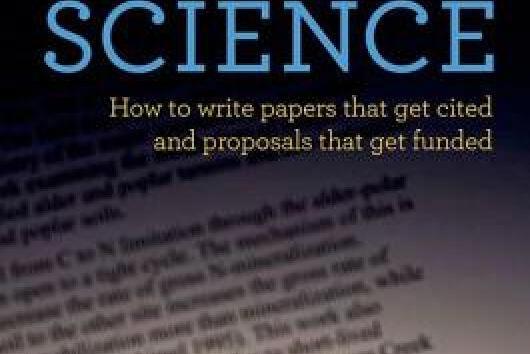《Writing Science》是2011年出版的圖書,作者是Joshua Schimel。
基本介紹
- 中文名:Writing Science
- 作者:Joshua Schimel
- 出版社:Oxford University Press
- 出版時間:2011年11月29日
- ISBN:9780199760244

《Writing Science》是2011年出版的圖書,作者是Joshua Schimel。
to the literary culture of their day. For these men, literature was an essential part of the practice of science itself, as important to their efforts as mapmaking, fieldwork, and observation. The reading and writing ...
This is the official text for the National Association of Science Writers. In the eight years since the publication of the first edition of A Field Guide for Science Writing, much about the world has changed. Some of ...
PARTTW0SCIENTIFICENGLISHEditor’SIntroduction 5OntheLanguageofPhysicalScience 6SomeGrammafic~ProblemsinScientificEnglish 7OntheGrammarofScientificEnglish 8WritingScience:LiteracyandDiscursivePowerBibliography Index ...
Writing Science. New York. Oxford University Press.Swales, J. M., and Feak, C. B. (2011). Academic Writing for Graduate Students: Essential Tasks and Skills (3rd Edition). Ann Arbor: University of Michigan Press.
Writing Science:The Model(1993)Technology,Bureaucracy and Schooling:Discuive Resources and Control(1993)Life as a Noun:Arresting the Univee in Science and Humanities(1993)The Discoue of History:Distancing the ...
Fraud in science 3.一個關於剽竊的例子 A story about plagiarism 第五部分 關於投稿 About submission 1.投稿前的準備 Before you submit your manuscript to a journal 2.投稿並等待編輯部的決定 Send it off,and wait for ...
段落的基本要素Writing in Science Learn with me Do?it?yourself 科技英語的主要特點Translating in Science Learn with me Do?it?yourself Vocabulary in Science Understanding in Science Unit 2An Age of Gene 因果關係Writing in ...
Writing vs. speaking 寫作與演講 ?Presentation structure: the hour glass format 演講結構:沙漏模式 2 The first steps of preparation 演講的第一步 ?Finding the take home message 尋找“引申結果” ?Identifying the main question...
Part Three Abstract Writing Appendix 1 Sample Paper of Liberal Arts Appendix 2 Sample Paper of Science Appendix 3 Sample Scientific Paper Appendix 4 Common Style Guides Appendix 5 APA References Appendix 6 MLA Documentation ...
Science Text 1 Can We Really Understand Matter ? 1 WRITING · TO THE STUDENTSTo the Students 7 Text 2 How to Go Back in Time? 9 WRITING · SKILLSDefinition 15 Text 3 Supporting Science 18 WRITING · SKILLS...
3.5Other word roots useful to science 3.6Exercises CHAPTER 4SCIENTIFIC ACADEMIC SPEAKING 4.1Correct pronunciation of scientific words 4.1.1Pronunciation: why speaking is as important as writing 4.1.2How to stress ...
WRITING·TO THE STUDENTS To the Students WRITING·TO THE STUDENTS To the Students Text 2 How to Go Back in Time?Text 2 How to Go Back in Time?Definition Definition Text 3 Supporting Science Text 3 Supporting Science...
寫作(Writing):提供1個與本課相關的題目,要求寫1個段落 附錄 還有國際音標 中文注釋真人錄音英漢對照辭彙表、科學術語索引科學技能索引按原子序數和字母順序排列的化學元素表等。全書信息量適中,語言簡潔,編排活潑,是中學生學習科普...
PART 1 Characteristics of English for Science and Technology PART 2 Grammar UNIT 2 Basic Reading and Writing Training PART 1 Text Reading PART 2 Grammar: the Usage of Articles PART 3 Key Points for Translation UNIT...
